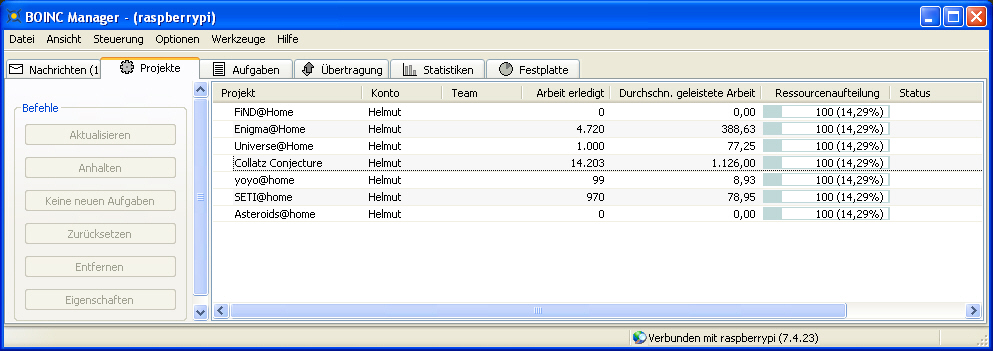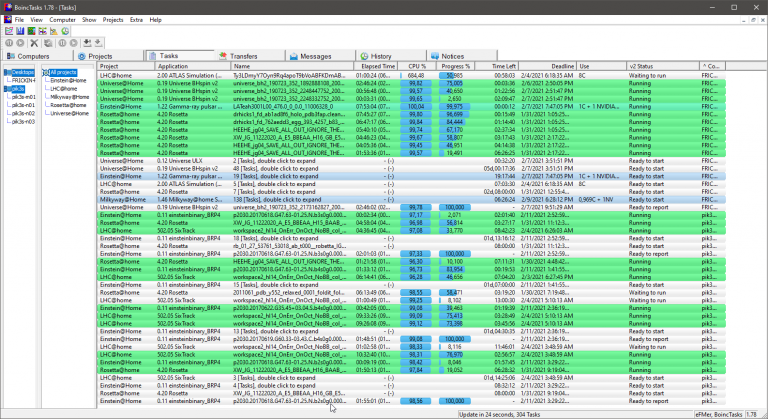

Navigate to the ssh folder and copy the key file to a new file called "pi01" cd.On the Master Pi, in the default home folder, create a new key.This part may get slightly complicated, but hopefully you can stay with me.
#Boinc raspberry pi 2 verification
To fix it so that communicating with each Pi doesn't result in a host key verification failure, we need to create and swap keys for each of our Raspberry Pi's. On your master Pi, you want to create a new textfile called "machinefile"Īnd in it, you want to type in each of the Pi's IP addresses (including the Master IP address) on a new line and then save the file.Īt this point, we could run a test file using mpiexec -f machinefile -n 4 hostname, but it will error out saying that there was a "host key verification failure". You want to repeat those steps for each of the other Pi's on the network renaming them to Pi03, Pi04, etc.
#Boinc raspberry pi 2 install

Once all of the Pi's are powered on, using our Master Pi, we should be able to get the IP addresses of each Pi on the network. None of the secondary Pi's need to have keyboards, mice, or monitors. Then for the remaining Raspberry Pi's, insert SD Cards into all of them, connect them to the same router as your Master Pi, and then boot them all up. Now that we have all of the SD Cards prepped, insert the Master SD Card back into the Master Pi, connect it to a router and boot it back up. Finish out of the configuration, and reboot your Pi.Click on the "Localization" tab and set your keyboard layout to match that of your countries.Click on the "Overclock" tab and choose "Turbo".Clock on the "Interfaces" tab and make sure SSH is enabled.


Once the image is burned to your SD Card, put it into each of the Raspberry Pi and boot it up.If you have a Mac, you can follow these instructions.If you have Windows, you can follow these instructions.Burn the Raspbian image to each SD Card you have for each Raspberry Pi.
#Boinc raspberry pi 2 download


 0 kommentar(er)
0 kommentar(er)
